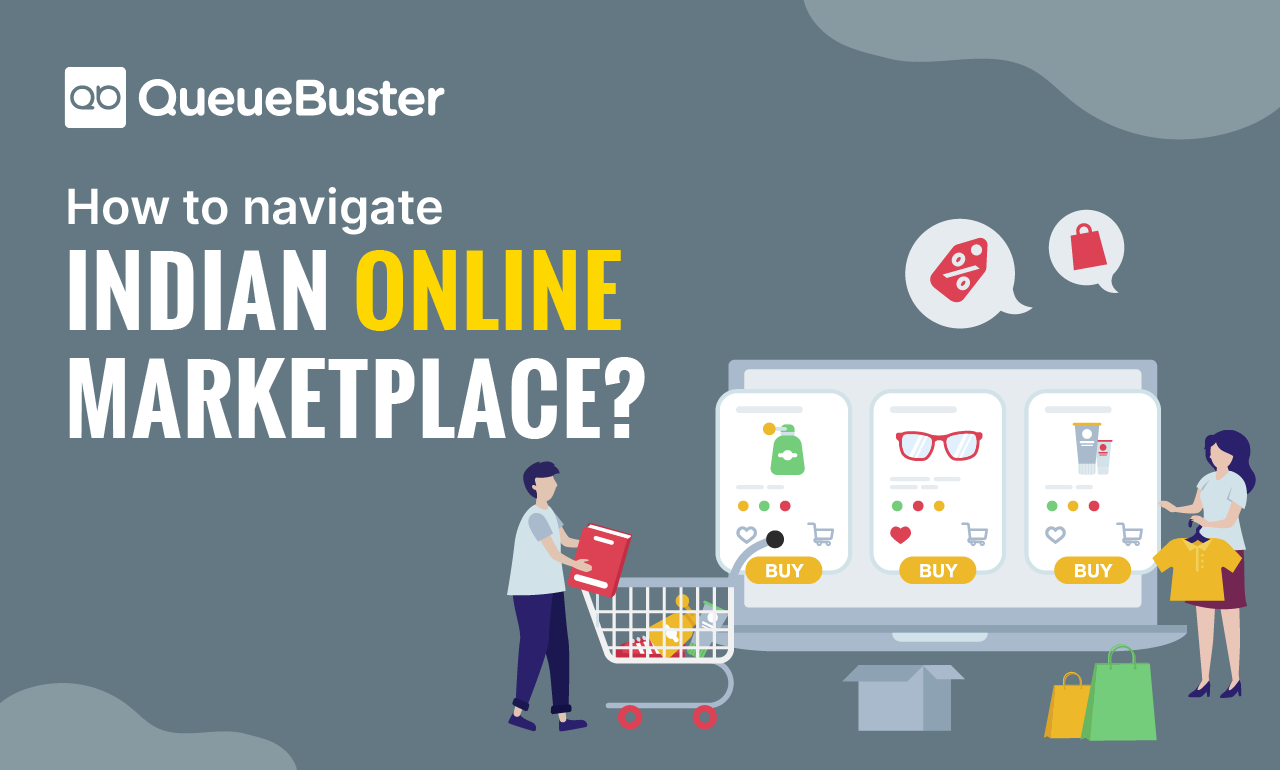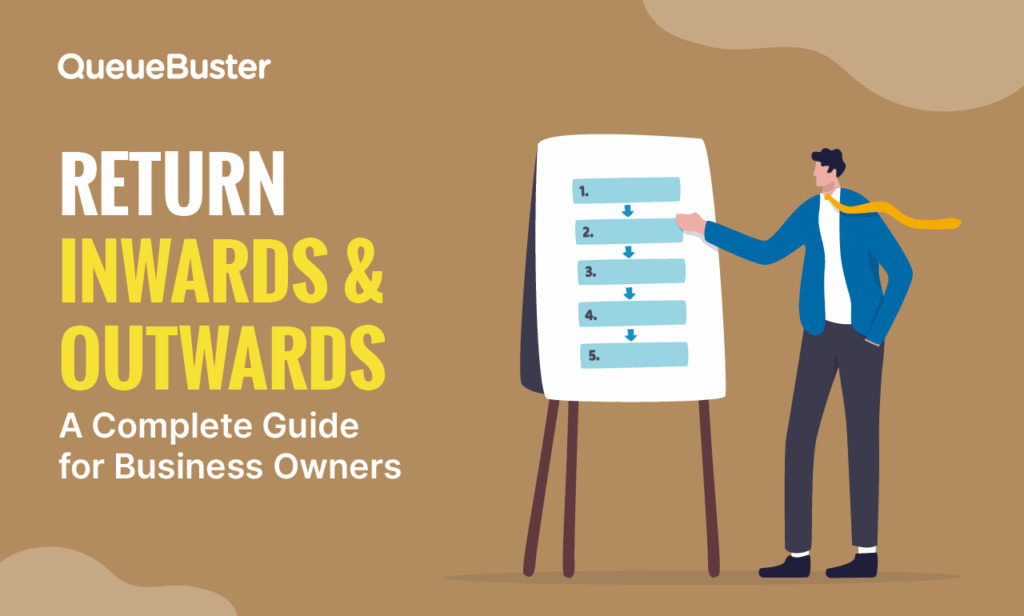
Your Ultimate Guide to Navigating the Online Store
Your Ultimate Guide to Navigating the Online Store

By QueueBuster Team Published: May 7th, 2024
Introduction
Are you looking to get into the world of buying and selling products online? If so, you’ve come to the right place! In this blog, we’ll explore everything you need to know about buying and selling products online – from setting up an online store to tips for finding success in the digital marketplace. In addition, we’ll discuss what makes buying and selling products online beneficial, how to ensure a successful transaction, and more. So let’s get started and learn all about buying and selling products online!
Steps Involved in Buying and Selling Products Online
From selecting a product to sell to understanding payment options and fees to building customer relationships, we’ve got all the details for you here. Let’s have a look:
1. Selecting a Product to Sell: The first step in running an online store is selecting a product. You want something that appeals to your target market and something that will be profitable after expenses like shipping and marketing are factored in. Next, consider what your potential customers need or desire and how easy it is to get the product from manufacturers or wholesalers.
2. Deciding on an Online Platform: Once you’ve settled on a product, you need to decide which platform you want to use for your store. Online marketplaces like Amazon and eBay allow you to list products quickly, and they take care of shipping and payments, but they also take a percentage of sales as part of their services. For more control over branding and design, opt for an eCommerce website builder like Shopify or BigCommerce.
3. Setting up Your Business Structure: Before setting up a shop online, it’s essential to determine your business structure (sole proprietorship, LLC, etc.) This will help with taxes and legal processes like getting permits or registering trademarks. In addition, knowing which business structure is proper for you can save time and money.
4. Understanding Payment Options and Fees: It’s essential to understand all the payment options available so that customers can quickly complete their orders from your website or marketplace listing without any hassles. You should also look into transaction fees associated with each option since these costs can add up quickly if not managed properly. Additionally, research different payment gateways such as Stripe and PayPal that enable online transactions securely without having sensitive card information on file with your store database.
5. Creating Your Storefront or Listings: Now that you know what platform you want to use for your store (online store vs. eCommerce website builder), it’s time to start creating content for your website or listings. This includes writing descriptions of each product, adding images/videos showcasing them, setting prices, etc. Do all these while keeping SEO best practices in mind so people searching for products related to yours can find them easily when browsing through search engines like Google or Bing. Also, don’t forget to set up pages like “About Us” so customers feel connected with who they are buying from.
6. Promoting Your Products: Start spreading the word about your new store. There are many ways this can be done, including organic methods such as SEO optimization, social media marketing, email campaigns, content creation, paid advertising such as Google AdWords, Facebook Ads, influencer collaborations, etc. All these strategies work together towards helping build brand awareness so customers know who you are when they come across one of your listings.
7. Shipping & Delivery Solutions: To ensure customer satisfaction, ensure that shipments reach them on time by choosing reliable shipping carriers. Additionally, offer different delivery methods (such as express next-day delivery) depending on how soon customers need their items. Finally, check out various courier companies before deciding which works best for managing deliveries within budget constraints.
8. Building Customer Relationships: Customer service plays a significant role in keeping buyers coming back again & again. Make sure that customer inquiries are responded to promptly with helpful answers & troubleshooting tips when needed. If possible, include a loyalty program where those returning customers receive discounts & special offers based on how much they purchase over time. This helps foster long-term relationships & builds trust among customers too!
Error: Contact form not found.
What to Consider When Buying and Selling Products Online
When it comes to buying and selling products online, there’s a lot to consider. From the tax implications of selling products online to legal requirements for eCommerce businesses, managing inventory, and risk management strategies. It’s essential to be aware of the many aspects of running an online business. Let’s examine some of the most important considerations when you buy and sell products online.
Tax Implications of Selling Goods Online: One primary consideration when selling goods online is taxation. Depending on your jurisdiction, different rules may apply about taxes due on sales made through an eCommerce store. The best way to ensure you are compliant with all applicable regulations is by consulting a qualified accountant or lawyer who can help you navigate the complexities of taxation in digital commerce.
Legal Requirements for eCommerce Businesses: In addition to taxes, other legal formalities must be taken into consideration setting up an eCommerce business. For example, different laws may apply depending on what kind of products you sell and where they are being shipped or delivered to. In some cases, additional licenses or permits may be required to operate your business legally. Therefore, before launching your store, you must understand the applicable regulations and meet the requirements.
Managing Inventory, Returns, and Refunds: No matter how well-stocked your inventory is, customers will always have questions about their orders or need assistance returning items for refunds or repairs. To main customer satisfaction and avoid any potential issues with returns or refunds down the line, ensure that your eCommerce site has explicit policies regarding returns and exchanges. There should be detailed information about shipping costs and delivery times associated with each product listed in the store. Additionally, keeping accurate records of stock levels will help ensure that you always have enough popular items.
Risk Management Strategies for eCommerce Businesses: Like any other type of business venture, there are risks associated with running an eCommerce business that must be managed appropriately to ensure success. You should have a plan for fraud prevention and customer service issues in case something goes wrong with an order or if customers have complaints or problems with your products or services. Additionally, building relationships with reliable suppliers can help minimize supply chain disruption, which could otherwise cost you time and money if orders cannot be fulfilled due to a lack of stock availability from suppliers.
Cyber Security Practices for eCommerce Businesses: Cyber security should also be taken seriously when operating an online store since confidential customer data must often be stored securely through encryption methods such as SSL (Secure Sockets Layer). Additionally, having measures such as firewalls in place can help protect your site from malicious attacks by hackers looking for vulnerable networks where they can steal data or disrupt operations altogether. Taking these steps can also provide peace of mind for customers who want assurance that their financial information is safe while shopping at your store. These considerations guide you towards making informed decisions when setting up an eCommerce business so you can get started on the right foot while creating a successful venture.
Error: Contact form not found.
Conclusion
Buying and selling products online can be a great way to make money while providing you with the convenience of shopping from home. When buying and selling products online, it’s essential to research the product, read reviews, compare prices, and ensure that you are dealing with a legitimate seller. Additionally, protecting yourself and your information while engaging in online transactions is essential. With the proper knowledge and tips, you can have a successful experience when buying and selling products online.
You can also use the QueueBuster which is a comprehensive business management app. Our app helps businesses to efficiently handle tasks such as invoice management, inventory management, customer management, loyalty programs, khata management, and online store management. To know more about QB, book a demo now!
Popular Posts

Carbon Credit Companies in India: Driving Climate Action Through Innovation
As India accelerates toward sustainable development and net-zero targets, carbon credits are […]

Return Inwards & Outwards: Meaning & Examples
In a fast-paced world, inventory-driven market like India, managing your stock and […]